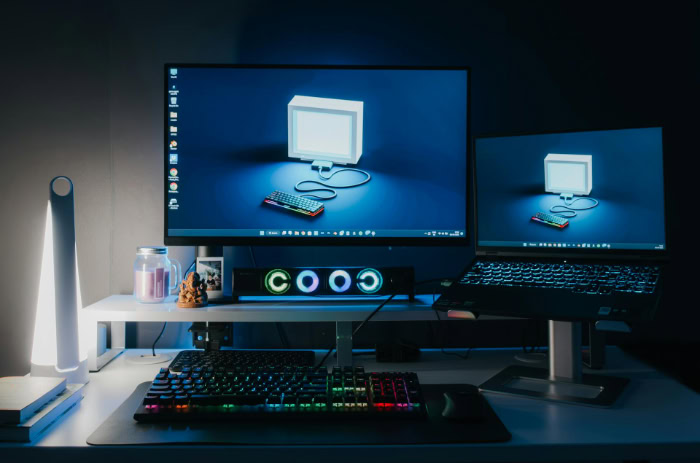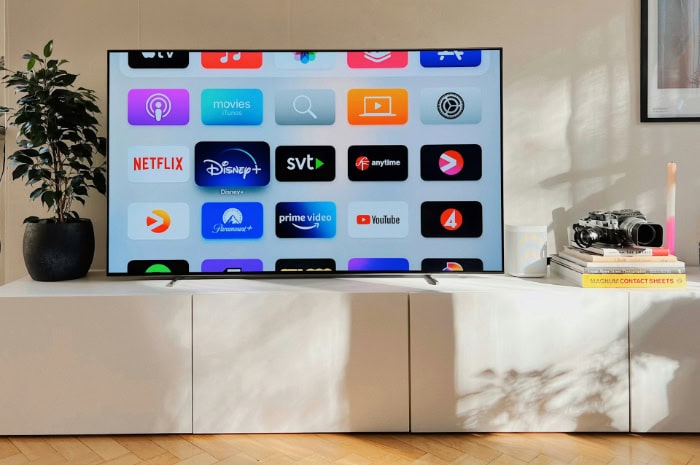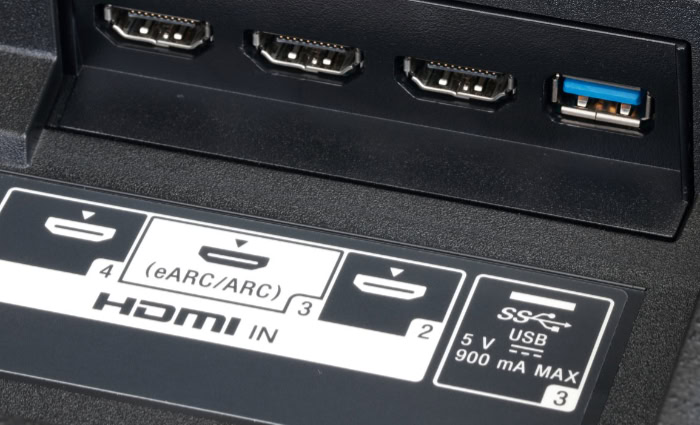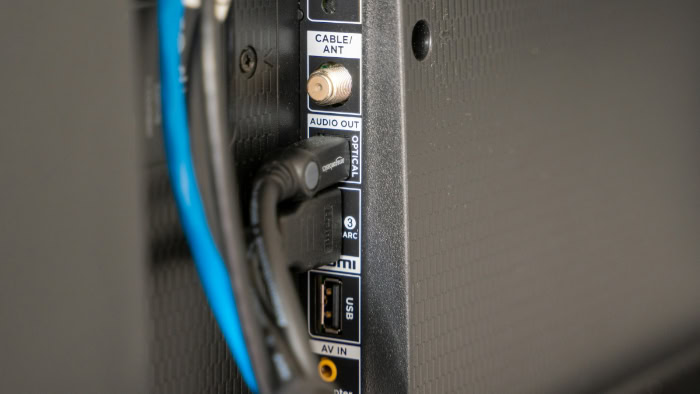HDMI 1.4 vs. HDMI 2.0: Choosing the Right HDMI

Plugging in a new TV, sound system, or gaming console often involves more than just matching ports. A lot happens behind the scenes with the cables carrying your audio and video.
Not all HDMI connections deliver the same experience, and even a small detail can limit screen resolution, refresh rate, or sound quality. As manufacturers roll out bigger, sharper displays and more immersive audio formats, picking between HDMI 1.4 and HDMI 2.0 becomes more than a technicality.
Bandwidth and Data Transfer Capabilities
Bandwidth sets the stage for what an HDMI connection can deliver in terms of video and audio performance. The higher the bandwidth, the more data can move between your source and your display, affecting everything from video resolution and refresh rate to audio quality and color depth.
HDMI 1.4 Bandwidth Limitations
HDMI 1.4 tops out at a maximum bandwidth of 10.2 gigabits per second (Gbps). When it launched, that figure represented a substantial upgrade from earlier HDMI versions, easily supporting full HD video and standard surround sound formats.
However, as home entertainment moved toward 4K resolution and more demanding audio-visual formats, 10.2 Gbps began to show its limits.
With HDMI 1.4, any attempt to transmit Ultra HD signals, such as 4K video, is restricted to lower refresh rates, generally 30 frames per second or less. This limitation means fast-paced content like live sports, action films, and gaming can appear less smooth or might require lower resolution for higher refresh rates.
Compression techniques can stretch the capabilities a bit, but overall, bandwidth ceilings restrict true high-definition experiences that modern TVs and gaming systems can provide.
HDMI 2.0 Bandwidth Advantages
HDMI 2.0 nearly doubles the available bandwidth, increasing the maximum data rate to 18 Gbps. This upgrade removes many of the limitations that held back earlier standards.
With this ample data pipeline, HDMI 2.0 can handle 4K video at 60 frames per second, offering dramatically smoother visuals and greater clarity, especially during fast-moving scenes or complex transitions.
Higher bandwidth also supports a broader range of features, from increased color depth to advanced audio formats and multistream video. Multiple video and audio streams can be transmitted simultaneously without sacrificing quality, which is important for setups involving dual displays or enhanced sound systems.
The leap in bandwidth ensures that users with HDMI 2.0 enjoy more immersive visuals and richer sound, future-proofing their equipment for new content and features.
Impact on High-Resolution Content Transmission
Bandwidth differences between HDMI 1.4 and HDMI 2.0 play a major role in shaping the visual experience. HDMI 1.4 struggles to keep pace with the demands of true 4K video, especially at higher frame rates, often resulting in compromises that reduce overall quality.
Attempting to push advanced color depths or high dynamic range over HDMI 1.4 can lead to further bottlenecks.
HDMI 2.0, with its higher bandwidth, supports a full suite of modern audio-visual technologies. Users can enjoy vibrant 4K content at a smooth 60 Hz refresh rate, take advantage of richer colors, and experience better audio fidelity.
Those who invest in the latest TVs, projectors, and AV receivers benefit from the wider data pipeline, ensuring that the equipment operates at its best and is ready for new standards as they emerge.
Resolution and Refresh Rate Support

Resolution and refresh rate together define the sharpness and smoothness of on-screen images. A higher resolution means more detail, while a higher refresh rate contributes to a fluid, lifelike appearance, especially in fast-moving scenes or interactive applications such as gaming.
With home entertainment systems and monitors continually pushing the boundaries of detail and motion clarity, HDMI standards must keep pace to ensure the best viewing and gaming experiences.
HDMI 1.4: 4K at 30Hz and 1080p at 120Hz
HDMI 1.4 emerged at a time when full HD (1080p) was quickly becoming the standard. Its support for 1080p at up to 120 Hz offered a welcome boost for gamers and those seeking extremely smooth motion.
Refresh rates this high at full HD help reduce motion blur and input lag, providing a more responsive experience for fast-paced video and action games.
With the introduction of 4K displays, HDMI 1.4 brought the ability to transmit 4K video, but with a significant catch. The bandwidth ceiling of 10.2 Gbps confines 4K output to a maximum of 30 Hz, which means only 30 frames are shown per second.
While acceptable for static presentations or slower-paced content, 4K at 30 Hz can feel choppy for sports, gaming, and fast action scenes. The limitation often forces users to choose between higher resolution and smoother motion.
HDMI 2.0: Native 4K at 60Hz, 8K Readiness, and HFR Support
HDMI 2.0 addresses the shortcomings of its predecessor by fully embracing the requirements of modern high-definition displays. With a maximum bandwidth of 18 Gbps, HDMI 2.0 offers native support for 4K resolution at a smooth 60 Hz refresh rate.
Doubling the frame rate at 4K provides much smoother visuals, greatly benefiting sports enthusiasts, action movie fans, and gamers seeking a more lifelike and enjoyable experience.
Beyond improved 4K performance, HDMI 2.0 builds in readiness for even higher resolutions and advanced content formats. Although true 8K transmission at high refresh rates is primarily associated with HDMI 2.1, HDMI 2.0 can handle select 8K formats at lower frame rates or with chroma subsampling.
High Frame Rate (HFR) capabilities, which allow for higher refresh rates at lower resolutions, also provide an extra edge for gaming and fast-moving content. Support for multiple video streams and advanced color spaces ensures that HDMI 2.0 remains versatile for both current and future display needs.
Color, HDR, and Visual Enhancements

Color accuracy, range, and vibrant visual effects play a huge role in the overall enjoyment of any modern display. Advancements in HDMI standards have made it possible for content creators and device manufacturers to deliver more lifelike colors, deeper contrast, and stunning visual detail.
Color Depth Comparison
HDMI 1.4 offers a maximum color depth of 8 bits per channel. Every pixel can display over 16 million color variations, which is more than adequate for standard HDTV broadcasts, Blu-ray movies, and most early high-definition content.
However, with only 256 shades per color channel, color gradients can sometimes appear less smooth, resulting in visible banding, especially in scenes with subtle color transitions like sunsets or sky backgrounds.
HDMI 2.0 steps up with support for 10- and 12-bit color depths. With 10 bits per channel, displays can render more than a billion distinct colors, and 12-bit support extends that even further.
This expanded color palette brings out far more detail in nuanced shades, allowing viewers to see smooth gradients and richer visuals without jarring shifts from one color to another. Support for the Rec. 2020 color space also allows HDMI 2.0 to handle a wider color spectrum, which is essential for modern Ultra HD content and professional media applications.
HDR Compatibility
High Dynamic Range (HDR) marks a major leap forward in visual realism, highlighting the deepest blacks and brightest whites while preserving detail across the spectrum. HDMI 2.0 brings mandatory support for HDR metadata, which lets compatible displays read and properly interpret enhanced content for breathtaking contrast and clarity.
Movies, streaming series, and video games look much more dynamic, pulling viewers deeper into each scene.
HDMI 1.4, on the other hand, lacks robust handling of HDR metadata. While some early or unofficial HDR implementations might work with HDMI 1.4, they usually come with compromises or compatibility issues.
Without proper recognition of HDR instructions, many displays connected via HDMI 1.4 cannot fully realize the potential of HDR content. This results in flatter images, less striking highlights, and reduced visual depth, especially when compared to setups equipped with HDMI 2.0.
Audio and Advanced Feature Sets

Modern audio and video setups demand more than just high-resolution visuals. The quality and complexity of audio channels, along with advanced capabilities like multiple video streams and enhanced sample rates, can make a huge difference in your viewing and listening experience.
Audio Channel Support
HDMI 1.4 introduced support for up to 8 audio channels, enough to power traditional surround sound setups. This limitation covers most basic home theaters and gaming scenarios, providing immersive effects and clear dialogue.
However, as audio standards advanced, so did consumer expectations. Formats like Dolby Atmos and DTS:X require many more discrete channels to create a captivating three-dimensional audio experience.
HDMI 2.0 pushes well beyond previous boundaries, supporting up to 32 audio channels. This expanded limit is essential for state-of-the-art sound systems, commercial cinemas, and premium home theaters.
With more available channels, HDMI 2.0 can deliver nuanced, multi-directional sound that envelops the listener, making even a living room feel like a professional cinema or concert hall.
Feature Upgrades: Dual Video Streams and Audio Sample Rates
HDMI 2.0 is not just about adding more audio channels. It also introduces the ability to transmit dual video streams to a single display.
Built-in picture-by-picture and picture-in-picture features allow users to watch two separate video sources simultaneously, such as a sports game and a live news feed. This is particularly useful for multitaskers, families, and commercial environments where different types of content need to be displayed side by side.
Differences in audio sample rates are also significant. HDMI 1.4’s 192 kHz maximum works well for high-fidelity music playback and standard surround sound mixes.
HDMI 2.0 raises the ceiling dramatically, supporting audio sampling rates up to 1536 kHz. By capturing more detail per second, higher sample rates enhance clarity, realism, and depth, making movies, games, and concerts sound noticeably richer.
Compatibility and Practical Applications

Selecting the right HDMI standard impacts not only performance but also the compatibility of your current and future devices. As HDMI technology advances, the interplay between cables, sources, and displays brings new possibilities, but it can also introduce challenges.
Smooth operation depends on matching the correct standards across your devices, factoring in everything from stream quality to how different generations cooperate in mixed setups.
Cable and Device Interoperability
HDMI was designed with backward compatibility in mind. HDMI 2.0 devices can typically connect to HDMI 1.4 hardware and vice versa, using the same physical connectors.
However, the system will always operate at the level of the least capable component. When mixing HDMI 1.4 and HDMI 2.0 devices within a single setup, the limitations of HDMI 1.4 automatically become the ceiling for the entire connection.
For example, connecting an HDMI 2.0 Blu-ray player to a TV that only supports HDMI 1.4 means your content will be limited to 4K at 30Hz, without enhanced color depth or HDR features, even if the source is capable of more.
Bandwidth bottlenecks also appear when using older cables with new devices. A cable rated for HDMI 1.4 may not carry enough data for all of HDMI 2.0’s features, making it essential to check that all parts of the chain, source, cable, and display, are up to the task for advanced features, such as 4K at 60Hz, HDR, and multi-channel audio.
Use-Case Recommendations
HDMI 1.4 remains reliable for basic high-definition needs. Streaming movies in 1080p, displaying presentations, or even watching 4K content at 30Hz works well with HDMI 1.4.
Many casual viewers and users with older televisions or projectors will find its capabilities sufficient for most everyday scenarios, particularly if content is not fast-paced or doesn’t demand high dynamic range.
HDMI 2.0 excels in scenarios that require higher performance. Smooth gaming on consoles, enjoying vibrant 4K HDR movies, or setting up advanced surround sound systems all benefit from HDMI 2.0’s greater bandwidth and expanded feature set.
Anyone seeking future-proofing for upcoming content or aiming to get the most from newer TVs, monitors, and audio equipment should prioritize HDMI 2.0 to avoid constantly running into hardware limitations.
Conclusion
Choosing between HDMI 1.4 and HDMI 2.0 has a meaningful impact on the performance and future readiness of your audio-visual setup. HDMI 2.0’s increased bandwidth allows for smooth 4K at 60Hz, expanded color depth, richer HDR experiences, immersive multi-channel sound, and advanced features like dual video streams.
In contrast, HDMI 1.4 is limited to lower frame rates in 4K, supports only basic color and audio formats, and lacks robust HDR handling.
Compatibility across HDMI generations helps maintain flexibility, but the oldest component in your chain will limit overall performance. For simple HD streaming or non-demanding tasks, HDMI 1.4 remains adequate.
Those with a passion for cinema-grade visuals, premium gaming, high-fidelity audio, or who want to keep their setup up to date with newer technologies should favor HDMI 2.0 and ensure all cables and devices meet that standard.
Selecting the right HDMI version comes down to your content preferences and existing hardware. For an immersive and future-ready experience, HDMI 2.0 delivers the features enthusiasts and creatives expect from today’s entertainment and productivity tools.


